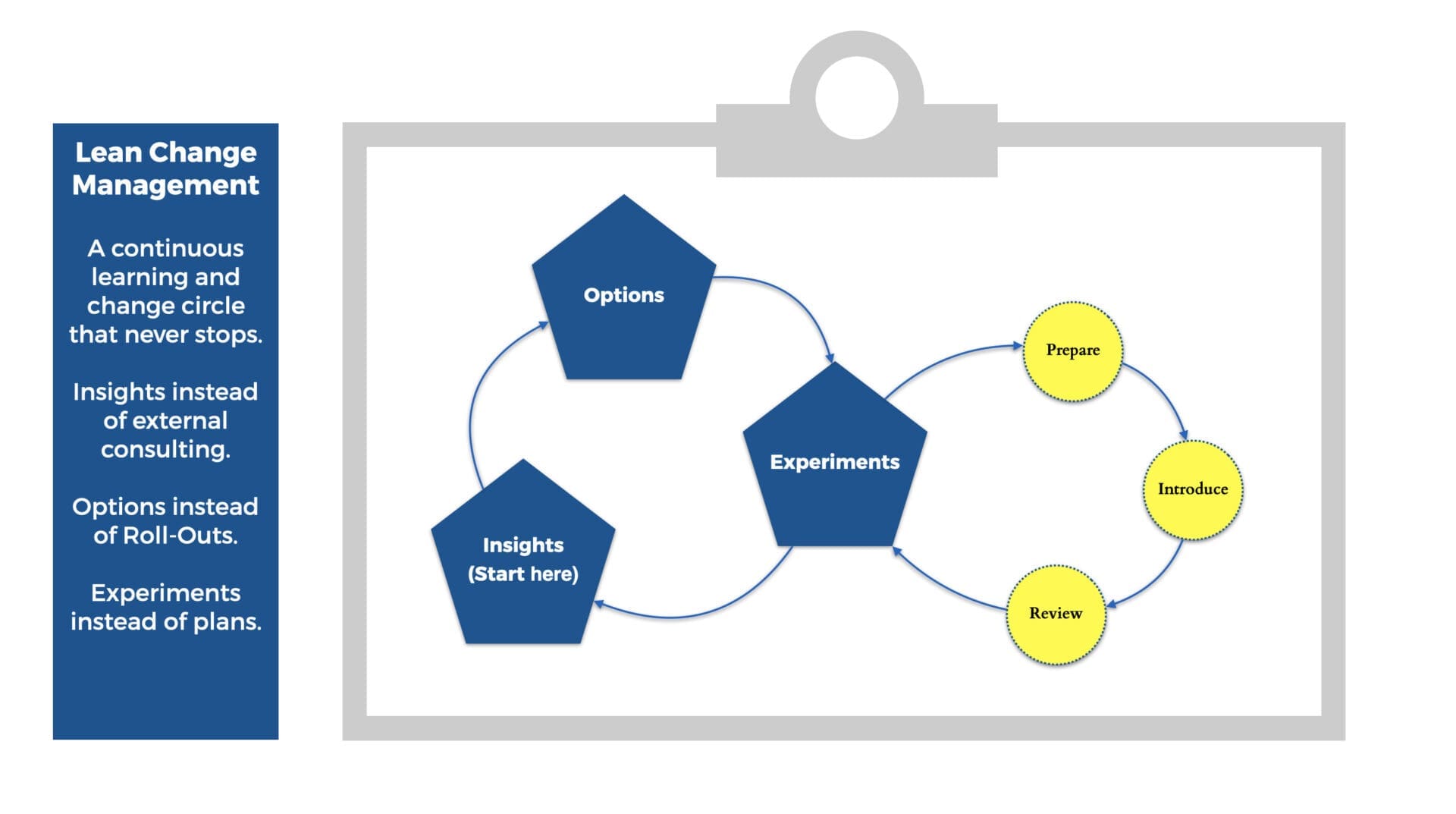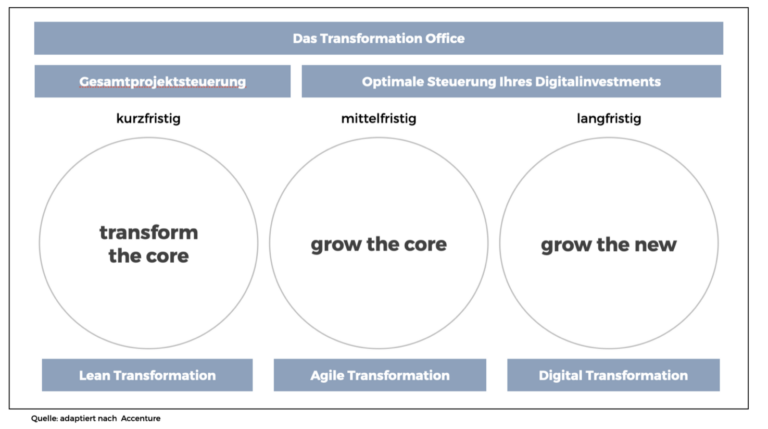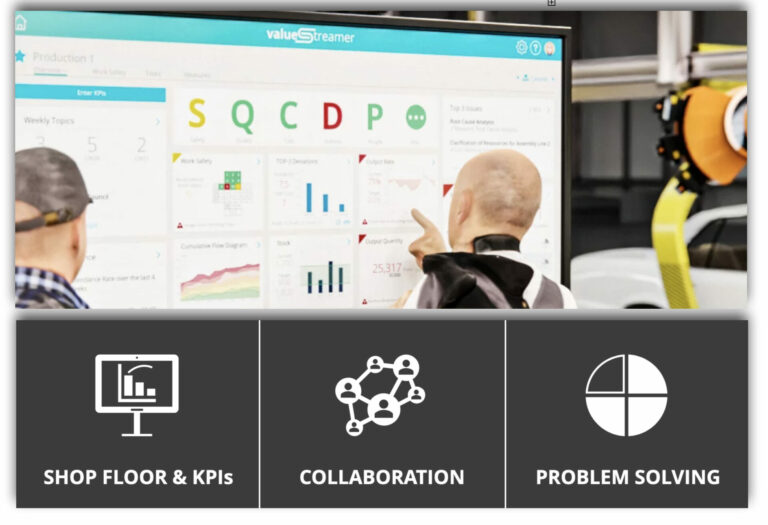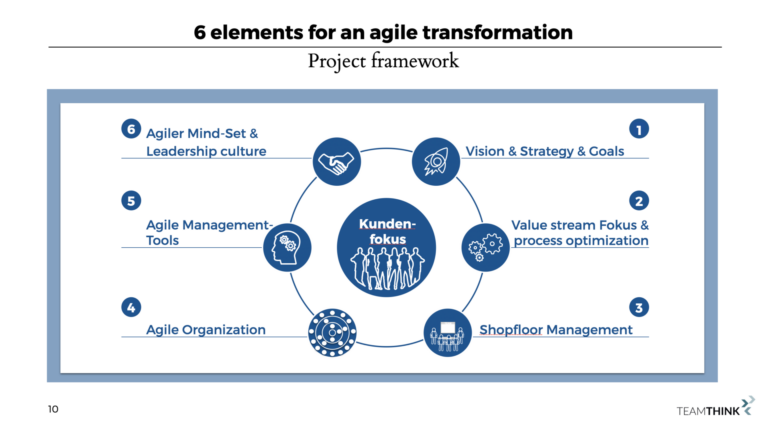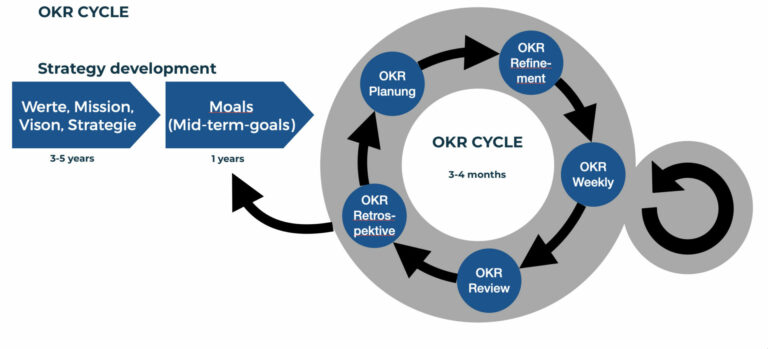Lean Change Management
The agile method for coping with permanent change
Companies have been operating in a volatile environment for years. Globalization and digitization have meant that organizations are subject to ever increasing dynamics of change. Lean Change Management is an innovative method for successfully accompanying continuous change processes.
Traditional change management and change management models
Active change management has been a standard procedure, at least in larger companies, since the mid-1990s at the latest. At this point in time, companies were increasingly confronted with changes resulting from advancing globalization and the transition from the classic industrial society to the knowledge and service society.
More or less at the same time, the first effects of digitization became noticeable. Change management was seen as conscious and targeted planning in order to initiate change processes, to accompany them and to successfully implement them in practice. Various change management models have been and are used for this purpose.
Kurt Lewin: unfreezing – moving – freezing
The change management model according to Kurt Lewin, which was developed in the 1940s, is known and is still widely used in practical applications. It divides change processes into three phases:
They begin with what is known as unfreezing – the perception of the need for change, the preparation of appropriate measures and the communication of their necessity in the company.
In the following moving phase, the change is practically initiated. What is now important, among other things, is good training for employees and managers in order to prevent organizational resistance and loss of productivity.
In the refreezing phase, the organization returns to normal. According to Lewin, change processes are completed with the firm establishment and application of new methods and practices.
The starting point of the model is a linear course of changes that are not understood as a permanent process. The employees are not seen as independent actors, but merely as executors of a plan.
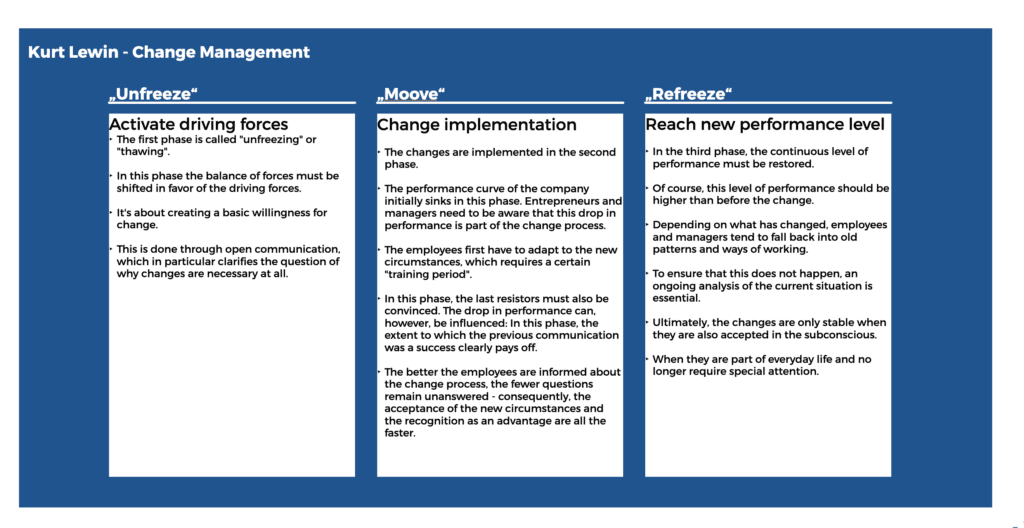
John Paul Kotter: 8 Phases of Change Management
The eight-phase model developed by the American management scientist John Paul Kotter is significantly more employee-oriented. Change management is realized from his perspective in the following steps:
- Create a sense of urgency
- Create strong coalitions for change in the company
- Develop strategically oriented visions and initiatives for their implementation
- Recruiting volunteers for change processes
- Remove obstacles and blockages that are holding back progress
- Create short-term successes and actively communicate
- Accelerate change processes
- Anchoring the changes in the organization.
According to Kotter, good and transparent communication of the change requirements and the activities aimed at coping with them is essential for successful change processes.
Resistance is dispelled by volunteers working as multipliers of the desired change within the organization and ensuring that affected – and mostly skeptical – employees become active supporters of organizational change.
Traditional change management has reached its limits
However, traditional change management based on these models is increasingly reaching its limits in the face of permanent and disruptive changes in the economic, technological and social environment of companies.
Today, only 30 to 50 percent of all change management projects are crowned with success. Various factors play a role here:
- Traditional change projects are complex and time consuming. Their realization extends over several months or even over years.
- You are driven to plan. The planning is usually worked out by a change team that focuses on changing processes – and not the people affected by them.
- Adaptation options to changed conditions during the implementation of the project are not provided, or only to a very limited extent.
- The projects are controlled hierarchically. The desired active participation of employees is often only achieved through training.

Contact us now!
We have more than 20 years of experience and deliver high quality consulting for your Agile, Lean or Digital Transformation.
Lean Change Management & Agility
Lean Change Management, on the other hand, pursues an innovative approach that is based on agile project management methods. In 2001 prominent US software developers published their “Manifesto for Agile Software Development”, which defined the fundamentals of agile forms of work. The approach was soon adopted by other industries. Central agility criteria are:
- Iteration: A product or process is processed until an optimum that meets the requirements is reached. The result of the individual development steps is checked at regular, short intervals. Development goals are adjusted in the process.
- Increments: The result of each iteration forms the basis for the further implementation of the project.
- Participation: All those involved are integrated into the planning and implementation of the project in a holistic way.
Lean Change Management – an innovative approach
Agility is realized, for example, through methods such as Scrum and Design Thinking. It also forms the basis for the lean startup approach according to Eric Ries. The focus is always on the development of innovative products within the framework of lean, customer-centered and iterative processes. This approach was adopted by Lean Change Management. The term was coined by Jason Little, who published his book of the same name in 2014.
Lean change management assumes that change processes are cyclical and permanent. They happen in three phases:
- Insights: Company-specific knowledge is used to generate insights and to derive options for action.
- Options: A specific change measure is selected from these options.
- Experiment: The selected measure is put into practice as part of an experiment. Its course and its results determine the further direction – measures can be continued, changed or rejected on this basis.
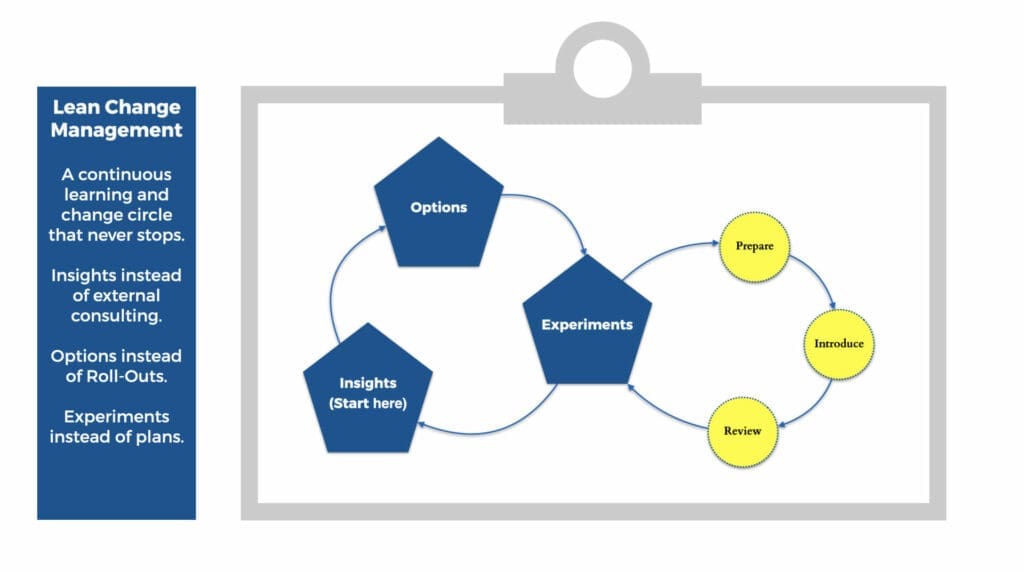
Continuous experiments
Lean Change Management is a continuous learning and change circle that never ends. In a co-creative process between the customer and the advisory system, experiments are constantly carried out in order to achieve the customer’s goals.
Option
The options can be divided into different categories, each with its own dynamic and effect in Lean Change Management.
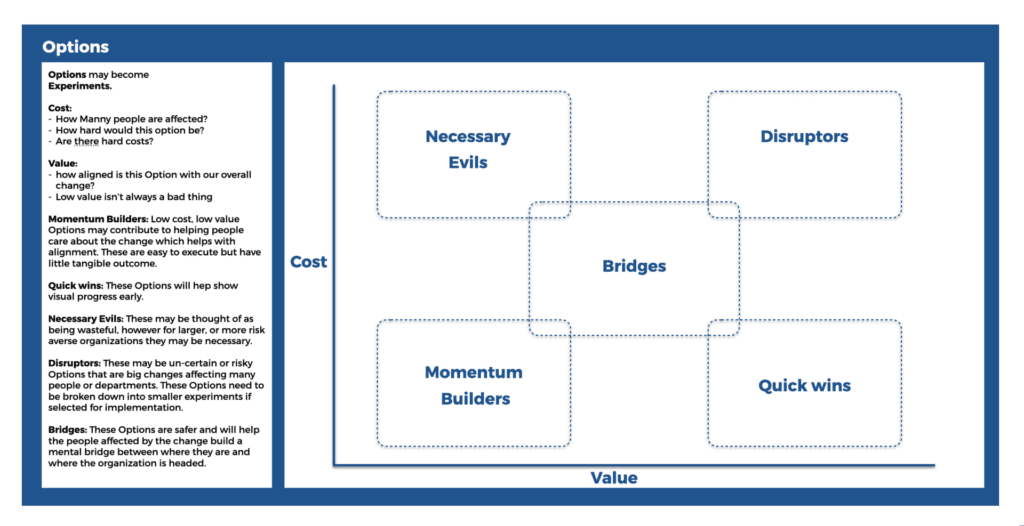
Options may become experiments.
Cost:
- How Manny people are affected?
- How hard would this option be?
- Are there hard costs?
Value:
- how aligned is this Option with our overall change?
- Low value isn’t always a bad thing
Momentum Builders: Low cost, low value
Options may contribute to helping people care about the change which helps with alignment. These are easy to execute but have little tangible outcome.
Quick wins: These Options will hep show visual progress early.
Necessary Evils: These may be thought of as being wasteful, however for larger, or more risk averse organizations they may be necessary.
Disruptors: These may be un-certain or risky Options that are big changes affecting many people or departments. These Options need to be broken down into smaller experiments if selected for implementation.
Bridges: These Options are safer and will help the people affected by the change build a mental bridge between where they are and where the organization is headed.
3 Principles & 1 Tracker
This type of consulting project is characterized by 3 principles or guidelines.
- Insights instead of external advice: The external advice supports the customer on the basis of a coaching relationship in working out the essential findings.
- Options instead of rollouts: various options are weighed against each other against the background of the interactions in the system and a decision is made. The plan is created in the process.
- Experiments instead of plans: on the basis of voluntariness, experiments are prepared and tested together with the employees in the Change System, and the results are evaluated together and the next steps are decided.
- Experiment tracker: The results of the experiments are visualized on the experiment tracker. From the change backlog, the next experiments for the next change sprint are drawn into the sprint backlog, the respective change print, depending on capacity and change dynamics.
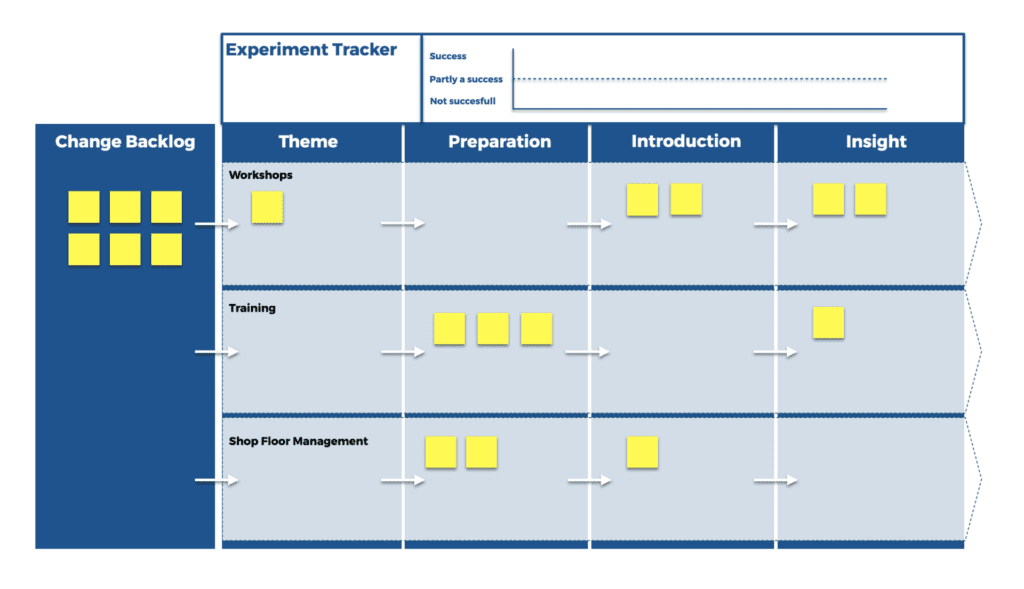
Transparency, communication and real employees involved
The task of lean change management is to create a sequence of dynamic equilibria in the company on an iterative basis. Against this background, it has no fixed goal and no defined conclusion.
Changes are understood as a continuous process. The experiments support what is known as validated learning.
In contrast to traditional change management, it is not aimed at the implementation of a fixed vision and a rigid strategy, but rather iteratively and adaptively shapes the way to achieve goals.
It is crucial for success that all employees affected by changes are involved, who also learn to deal with uncertainties.
The essential prerequisites for this are transparency and ongoing communication.

Contact us now!
We have more than 20 years of experience and deliver high quality consulting for your Agile, Lean or Digital Transformation.

